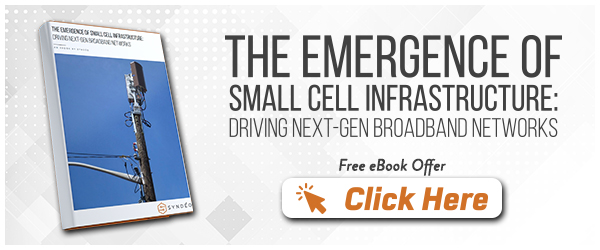
4 Things You Need to Know About Small Cell Battery Management (Part 2)
In part 1 of this article, the importance of proper battery management was addressed through the considerations of reliability and uptime for successful operations, satisfactory work, and maintaining secure power during outages. The second half of this discussion will address maintenance and monitoring/remote management of small cell batteries, as well as providing the solution to all of these considerations.
Maintenance
Maintaining batteries is a cautious game of balancing great backup power and low costs; you need to be sure that there aren’t any long-term battery issues, but you need to do it without breaking the bank. Maintenance typically doesn’t top the priority list either, so it’s essential to make this task quick and easy in order to be sure that it gets done and it gets done right.
The first way to go about maintenance is by establishing a routine battery-testing regimen, whether the checks are made during other work or according to a seasonal plan. Manual routine testing ensures that what needs to be accomplished is accomplished; nonetheless, it doesn’t ensure that all mistakes are caught in time. No matter how often the testing is conducted, failed batteries can still sit in the field for extended periods of time. Even more, manual testing can’t mitigate the risks of much more significant problems, such as thermal runaway.
An ideal option to eliminate the risks and doubts contained within a manual testing system is to opt for the use of remote monitoring technology. This can provide alerts about battery status or specific needs without needing constant manual checks.
Monitoring/Remote Management
Thanks to the IoT, new technology can be leveraged to automate and simplify many of the processes surrounding battery maintenance and upkeep. Instead of providing insights into different locations and batteries monthly or even quarterly, monitoring technology is capable of delivering up-to-the-minute data and alerts. This advanced system of monitoring and notification can help ensure the safety and welfare of the batteries which are so central to today’s connected world. All data is accessed through the internet, and alerts can be sent immediately to technicians as a means of drastically decreasing the amount of time a failed battery remains in the field.
This advanced technology can also become predictive; it can detect battery issues in advance in order to allow technicians to work proactively, reducing the time that failures occur in the field to nearly zero. It also allows for remote management, letting companies adjust battery charging based on the data they have collected, which, in turn, can even extend battery life and significantly improve long-term performance. Monitoring, managing, and organizing maintenance checks has never been easier than it is with the Internet of Things.
SYNDÉO’s Smart Vault can empower all of the considerations in part 1 and part 2 of this discussion. The Smart Vault is a secure, waterproof, and thermally controlled subsurface enclosure that can blend into any location to safely and effectively house batteries for efficient use and management. Proven in trials with the City of Austin, TX, SYNDÉO offers competitive prices, top-notch security, and unrivaled neutral hosting opportunities to make it the best solution to house Smart City Technology in the market. With the Smart Vault, you will be able to easily maintain your batteries and feel sure that they are safe.

